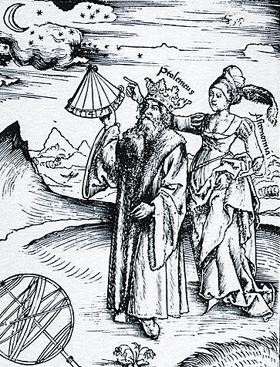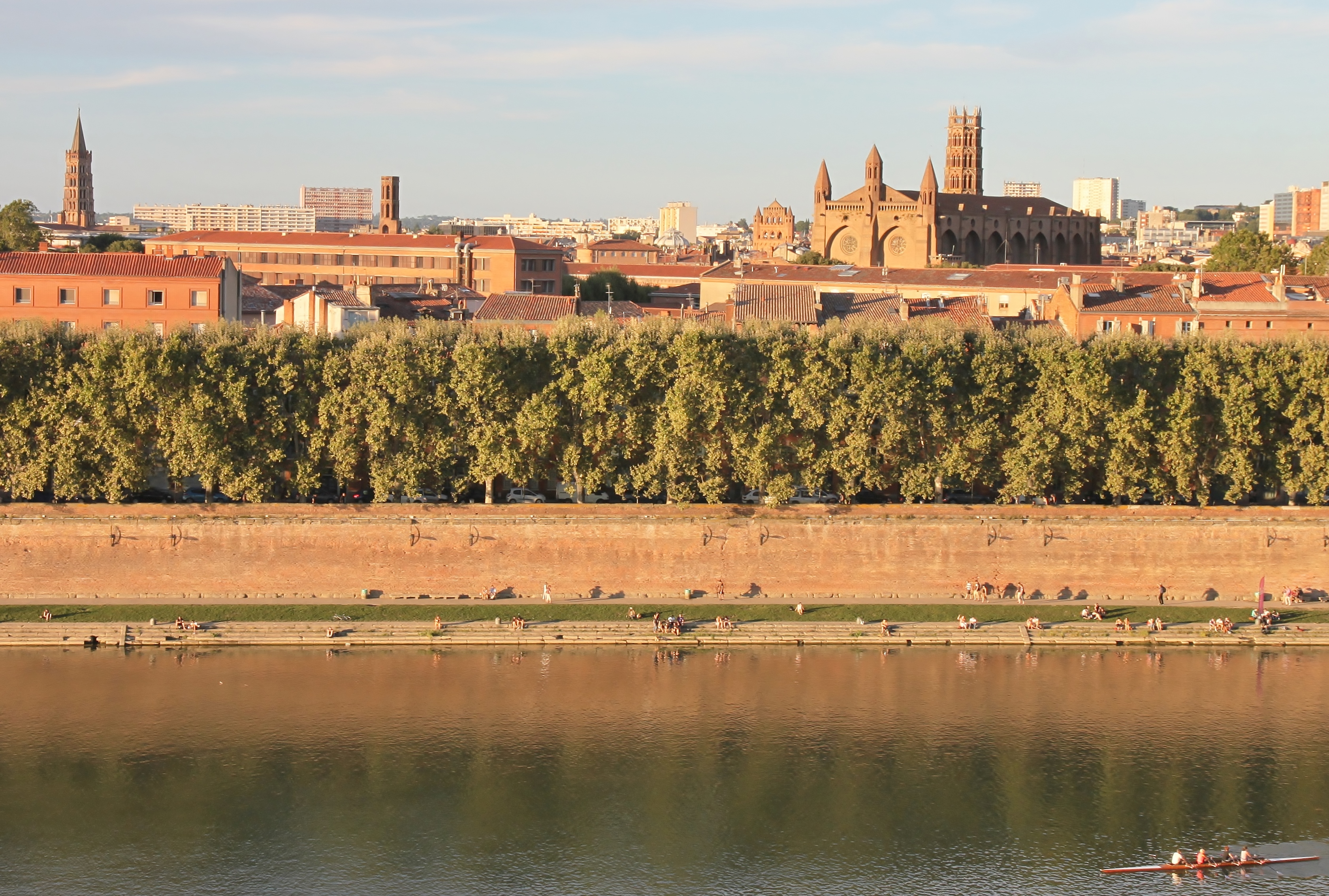|
Santones
The Santoni or Santones () were a Gallic tribe dwelling in the later region of Saintonge during the Iron Age and the Roman period. Name These people are noted as ''Santonum'', ''Santonos'' and ''Santonis'' by Caesar (mid-1st c. BC), ''Santónōn'' (Σαντόνων) by Strabo (early 1st c. AD), ''Santoni'' by Pliny (1st c. AD), ''Santonis'' by Pomponius Mela (mid-1st c. AD) and Tacitus (early 2nd c. AD), as ''Sántones'' (Σάντονες, var. Σάντωνες) by Ptolemy (2nd c. AD). The city of Saintes, attested in the 1st c. AD as ''Mediolanum Santonum'' (''a Sanctone'' in the 10th c., ''Xainctes'' 11th c.) and the region of Saintonge, attested in the 4th c. AD as ''Santonica tellus'' (''Xanctonia'' in 1242, ''Zantonge'' ca. 1370), are named after the Gallic tribe. Geography The Santoni lived in the north of the Garonne estuary, in the modern Saintonge region. During the Roman period, their chief town was Mediolanum Santonum (modern Saintes). History Their te ... [...More Info...] [...Related Items...] OR: [Wikipedia] [Google] [Baidu] [Amazon] |
Pictones
The Pictones were a Gallic tribe dwelling south of the Loire river, in the modern departments of Vendée, Deux-Sèvres and Vienne, during the Iron Age and Roman period. Name They are mentioned as ''Pictonibus'' and ''Pictones'' by Julius Caesar (mid-1st c. BC), ''Piktónōn'' (Πικτόνων) by Strabo (early 1st c. AD), ''Pictones'' by Pliny the Elder (1st c. AD), ''Píktones'' (Πίκτονες; var. πήκτωνες, πήκτονες, πίκτωνες) by Ptolemy (2nd c. AD), and as ''Pictonici'' by Ausonius (4th c. AD). They were also known as ''Pictavi'' in an inscription (2nd c. AD), the ''Notitia Galliarum'' (4th c. AD) and by Ammianus Marcellinus (4th c. AD). The city of Poitiers, attested ca. 356 AD as ''urbis Pictavorum'' (''Pictavis'' in 400–410, ''Peitieus'' '' Pectievs' in 1071–1127), and the region of Poitou, are named after the Gallic tribe. Geography The Pictones dwelled south-east of the Namnetes, west of the Bituriges Cubi, north-west of the Lemov ... [...More Info...] [...Related Items...] OR: [Wikipedia] [Google] [Baidu] [Amazon] |
Saintonge (region)
Saintonge (), historically spelled Xaintonge and Xainctonge, is a region of France located on the west central Atlantic coast, corresponding with the former province of the same name. The largest city is Saintes (Xaintes, Xainctes). Other principal towns include Saint-Jean-d'Angély, Jonzac, Frontenay-Rohan-Rohan, Royan, Marennes, Pons, and Barbezieux-Saint-Hilaire. In 1790, during the French Revolution, Saintonge became part of Charente-Inférieure, one of the 83 departments organized by the new government. This was renamed as Charente-Maritime in 1941, during World War II. The region is known for its Romanesque churches. See Saintonge Romane (Éditions Zodiaque) - 'sa richesse en monuments l'emporte sur tout autre', p.7 History The region derives its name from the '' Santones'', an ancient Gallic tribe that once inhabited the area. They were one of the numerous Celtic peoples in Europe before the rise of the Roman Empire. During antiquity, Saintonge was part o ... [...More Info...] [...Related Items...] OR: [Wikipedia] [Google] [Baidu] [Amazon] |
Mediolanum Santonum
Mediolanum Santonum was a Roman town in Gallia Aquitania, now Saintes. It was founded in about 20 BC in connection with an expansion of the network of Roman roads serving Burdigala. The name means 'centre of the Santones', the tribe that then inhabited the area; the town became an important center in the Roman province of Gallia Aquitania. Monuments The principal extant monuments of the Roman period are: *a Roman city gate now called the Arch of Germanicus *a fairly large Roman lapidary collection *a large amphitheatre Gallery Drussus 03251.JPG, Bust Arc de Germanicus.JPG, Arch of Germanicus Saintes amphitheatre.jpg, The amphitheatre An amphitheatre (American English, U.S. English: amphitheater) is an open-air venue used for entertainment, performances, and sports. The term derives from the ancient Greek ('), from ('), meaning "on both sides" or "around" and ('), meani ... Structures roman amphitheatre Saintes Charente-Maritime.jpg, Close up of the vomitoria of ... [...More Info...] [...Related Items...] OR: [Wikipedia] [Google] [Baidu] [Amazon] |
Saintes, Charente-Maritime
Saintes (; Poitevin-Saintongeais: ''Sénte'') is a Communes of France, commune and historic town in western France, in the Charente-Maritime department of which it is a Subprefectures in France, sub-prefecture, in Nouvelle-Aquitaine. Saintes is the second-largest city in Charente-Maritime, with inhabitants in 2021. The city's immediate surroundings form the second-most populous metropolitan area in the department, with inhabitants. While a majority of the surrounding landscape consists of fertile, productive fields, a significant minority of the region remains forested, its natural state. In Roman times, Saintes was known as ''Mediolanum Santonum''. During much of its history, the name of the city was spelled Xaintes or Xainctes. Primarily built on the left bank of the Charente, Saintes became the first Roman capital of Aquitaine. Later it was designated as the capital of the province of County of Saintonge, Saintonge under the Ancien Régime. Following the French Revolution, ... [...More Info...] [...Related Items...] OR: [Wikipedia] [Google] [Baidu] [Amazon] |
Helvetii
The Helvetii (, , Gaulish: *''Heluētī''), anglicized as Helvetians, were a Celtic tribe or tribal confederation occupying most of the Swiss plateau at the time of their contact with the Roman Republic in the 1st century BC. According to Julius Caesar, the Helvetians were divided into four subgroups or '' pagi.'' Of these, Caesar names only the Verbigeni and the Tigurini, while Posidonius mentions the Tigurini and the Tougeni (). They feature prominently in the '' Commentaries on the Gallic War,'' with their failed migration attempt to southwestern Gaul (58 BC) serving as a catalyst for Caesar's conquest of Gaul. The Helvetians were subjugated after 52 BC, and under Augustus, Celtic oppida, such as Vindonissa or Basilea, were re-purposed as garrisons. In AD 68, a Helvetian uprising was crushed by Aulus Caecina Alienus. The Swiss plateau was at first incorporated into the Roman province of Gallia Belgica (22 BC), later into Germania Superior (AD 83). The Helvetians ... [...More Info...] [...Related Items...] OR: [Wikipedia] [Google] [Baidu] [Amazon] |
Ancient Greek Coinage
The history of ancient Greek coinage can be divided (along with most other Greek art forms) into four periods: the Archaic, the Classical, the Hellenistic and the Roman. The Archaic period extends from the introduction of coinage to the Greek world during the 7th century BC until the Persian Wars in about 480 BC. The Classical period then began, and lasted until the conquests of Alexander the Great in about 330 BC, which began the Hellenistic period, extending until the Roman absorption of the Greek world in the 1st century BC. The Greek cities continued to produce their own coins for several more centuries under Roman rule. The coins produced during this period are called Roman provincial coins or Greek Imperial Coins. Weight standards and denominations The three most important standards of the ancient Greek monetary system were the Attic standard, based on the Athenian drachma of of silver, the Corinthian standard based on the stater of of silver, that was ... [...More Info...] [...Related Items...] OR: [Wikipedia] [Google] [Baidu] [Amazon] |
Ptolemy
Claudius Ptolemy (; , ; ; – 160s/170s AD) was a Greco-Roman mathematician, astronomer, astrologer, geographer, and music theorist who wrote about a dozen scientific treatises, three of which were important to later Byzantine science, Byzantine, Islamic science, Islamic, and Science in the Renaissance, Western European science. The first was his astronomical treatise now known as the ''Almagest'', originally entitled ' (, ', ). The second is the ''Geography (Ptolemy), Geography'', which is a thorough discussion on maps and the geographic knowledge of the Greco-Roman world. The third is the astrological treatise in which he attempted to adapt horoscopic astrology to the Aristotelian physics, Aristotelian natural philosophy of his day. This is sometimes known as the ' (, 'On the Effects') but more commonly known as the ' (from the Koine Greek meaning 'four books'; ). The Catholic Church promoted his work, which included the only mathematically sound geocentric model of the Sola ... [...More Info...] [...Related Items...] OR: [Wikipedia] [Google] [Baidu] [Amazon] |
Battle Of Alesia
The Battle of Alesia or siege of Alesia (September 52 BC) was the climactic military engagement of the Gallic Wars, fought around the Gauls, Gallic ''oppidum'' (fortified settlement) of Alesia (city), Alesia in modern France, a major centre of the Mandubii tribe. It was fought by the Roman army of Julius Caesar against a confederation of List of peoples of Gaul, Gallic tribes united under the leadership of Vercingetorix of the Arverni. It was the last major engagement between Gauls and Romans, and is considered one of Caesar's greatest military achievements and a classic example of siege warfare and Investment (military), investment; the Roman army built dual lines of fortifications—an inner wall to keep the besieged Gauls in, and an outer wall to keep the Gallic relief force out. The Battle of Alesia marked the end of Gallic independence in the modern day territory of France and Belgium. The battle site was probably atop Mont Auxois, above modern Alise-Sainte-Reine in Fran ... [...More Info...] [...Related Items...] OR: [Wikipedia] [Google] [Baidu] [Amazon] |
Garonne
The Garonne ( , ; Catalan language, Catalan, Basque language, Basque and , ; or ) is a river that flows in southwest France and northern Spain. It flows from the central Spanish Pyrenees to the Gironde estuary at the French port of Bordeaux – a length of , of which is in Spain (Val d'Aran);Le bassin versant de la Garonne Syndicat Mixte d'Études & d'Aménagement de la Garonne the total length extends to if one includes the Gironde estuary between the river and the sea. Its basin area is , which increases to if the Dordogne (river), Dordogne River, which flows from the east and joins the Garonne at Bec d'Ambès to form the Gironde estuary, is included. Umayyad and Duchy of Aquitaine , Aquitanian forces fought the Battle of the River Garonne in 732 beside the river near present-day ... [...More Info...] [...Related Items...] OR: [Wikipedia] [Google] [Baidu] [Amazon] |
Tacitus
Publius Cornelius Tacitus, known simply as Tacitus ( , ; – ), was a Roman historian and politician. Tacitus is widely regarded as one of the greatest Roman historians by modern scholars. Tacitus’ two major historical works, ''Annals'' (Latin: ) and the ''Histories'' (Latin: ), originally formed a continuous narrative of the Roman Empire from the death of Augustus (14 AD) to the end of Domitian’s reign (96 AD). The surviving portions of the Annals focus on the reigns of Tiberius, Claudius, Nero, and those who reigned in the Year of the Four Emperors (69 AD). Tacitus's other writings discuss oratory (in dialogue format, see ), Germania (in ''De origine et situ Germanorum''), and the life of his father-in-law, Agricola (the general responsible for much of the Roman conquest of Britain), mainly focusing on his campaign in Britannia ('' De vita et moribus Iulii Agricolae''). Tacitus's ''Histories'' offers insights into Roman attitudes towards Jews, ... [...More Info...] [...Related Items...] OR: [Wikipedia] [Google] [Baidu] [Amazon] |
Carte Du Pays De Santones Sous Les Romains
Carte may refer to: People * Alexander Carte (1805–1881), Irish British zoologist * Anto Carte (1886–1954), Belgian painter * Helen Carte (1852–1913), Scottish British businesswoman * Richard Carte (1808–1891), British flute-maker * Samuel Carte (1652–1740), English antiquarian * Thomas Carte (1686–1754), English historian * Omer Carte Qalib (1930–2020), Somalian politician * Carte Goodwin (born 1974), U.S. politician * Carte Said (born 1997), Italian soccer player Other uses * CARTE Museum (Cartographic Acquisition Research Teaching and Exhibition), Baton Rouge, Louisiana, USA * Carte network, a French resistance network See also * Deidre LaCarte, Canadian dancer * Julio Lacarte Muró (1918–2016), Uruguayan diplomat * * Card (other) * Cart (other) * Cartes (other) * Cartesian (other) * Descartes (other), including ''des Cartes'' * D'Oyly Carte (other) * Carte blanche (other) A blank cheque o ... [...More Info...] [...Related Items...] OR: [Wikipedia] [Google] [Baidu] [Amazon] |






